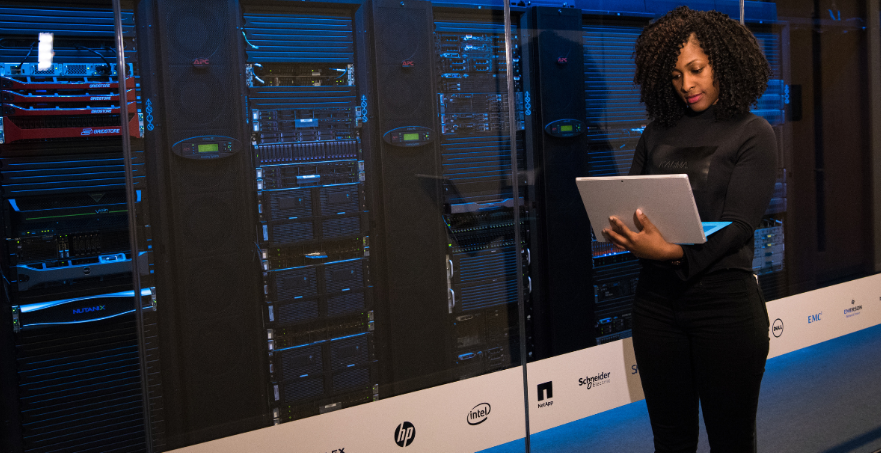ETL and ELT are two types of data integration processes crucial to effective data management in the digital age. The global market for data pipeline tools has seen significant growth, reaching $7.1 billion in 2021, and is forecast to continue its rapid growth with a CAGR of 24.5% from 2022 to 2030. Let’s discover how these two strategies differ and what factors influence the choice between ETL and ELT.
Table of Contents
A brief overview of ETL and ELT
WHAT IS ETL (EXTRACT, TRANSFORM, LOAD)?
ETL represents the process of data integration, where data is first extracted from various sources. During the transformation stage, the data undergoes standardization, enrichment, and validation. In the final stage, the transformed data goes into the target data warehouse or database, ready for query, reporting, and analysis. The ETL process, which has been used for many years, requires precise planning, especially when working with large data sets. As a result, it can ensure that data is efficiently transformed and loaded into the target system.
See also:
WHAT IS ELT (EXTRACT, LOAD, TRANSFORM)?
In ELT, data extraction, as in ETL, involves collecting information from various sources. Unlike ETL, however, data is loaded into the target data warehouse or database unchanged. Data transformation occurs after loading. It is transformed, cleaned, and standardized in the data warehouse using SQL or other data manipulation languages. ELT, typically used with modern cloud-based data warehouses, enables massive parallel processing. This process allows for efficient on-site data transformation.
The difference between ETL and ELT
THE ORDER OF OPERATIONS
The first difference between ETL and ELT is the order of operations. In the traditional ETL approach, data transformation takes place before loading the data into the data warehouse. This process involves complex transformations, cleaning, and standardization of data in the temporary area. Although this allows the data to be fine-tuned to the structure of the data warehouse, it can delay the availability of data for analysis.
Whereas in the case of ELT, data transformation takes place on-site after the data is loaded into the data warehouse. This approach offers greater flexibility. It enables the analysis of data in its original form and applies transformations as necessary. This way minimizes delays associated with pre-processing. However, it can affect query and analysis performance, especially if the target system lacks computing power.
SUPPORT FOR THE DATA REPOSITORY
Another major difference between ETL and ELT is support for the type of data repository.
The traditional ETL approach works perfectly with classic data warehouses. ETL is optimized for relational data processing, which makes it effective in environments where data hierarchies and schemas are clearly defined.
On the other hand, ELT, being a newer approach, stands out for its flexibility. ELT is well-suited for various types of data repositories, covering:
- Data lakes
- Data warehouses
- Cloud-based data lakes
This approach makes it possible to support a variety of data structures and types. That’s why ELT is crucial in environments where data takes different forms, from structured to unstructured. In addition, ELT offers greater adaptability to dynamic business needs.
SIZE AND TYPES OF DATASETS
ETL and ELT present significant differences when it comes to the size and types of datasets. The ETL process is ideal for processing smaller, relational datasets that require complex transformations before analysis. With ELT, the approach is more versatile. ELT can handle any size and type of data, working well with both structured and unstructured large datasets. Loading the entire dataset allows analysts the flexibility to choose which data to transform and use for analysis.
How to choose the best approach
A variety of factors are important in deciding between ETL and ELT approaches, such as:
- Data volume
- Processing speed
- Infrastructure
- Business objectives
Organizations should tailor their choices to their specific needs in the area of data integration and technology capabilities.
ELT is effective when you have a lot of computing power in the data warehouse and process large amounts of data. In this approach, data is originally loaded into the data warehouse, and transformations are performed at the analysis stage.
ETL, on the other hand, may be more appropriate when complex data transformations are needed before loading the data into the data warehouse. ETL may also be the choice when the source system is more efficient in processing data than the data warehouse.
Hybrid solutions that combine elements of both approaches are becoming increasingly popular. Future trends are influencing the development of the data integration landscape. The ultimate choice between ETL and ELT depends on an organization’s specific requirements and strategy. If you are still not sure what approach to choose, get in touch with Data Engineering services for personalized guidance and expert solutions.
Conclusion
The article compares ETL and ELT as data processing methods. ETL transforms data before it is loaded into the warehouse, while ELT loads unaltered data, transforming it later into the data warehouse. Hybrid solutions, combining elements of both approaches, are becoming increasingly popular, enabling flexibility and optimization. The final choice depends on an organization’s specific requirements and strategy in a comprehensive data integration ecosystem.

